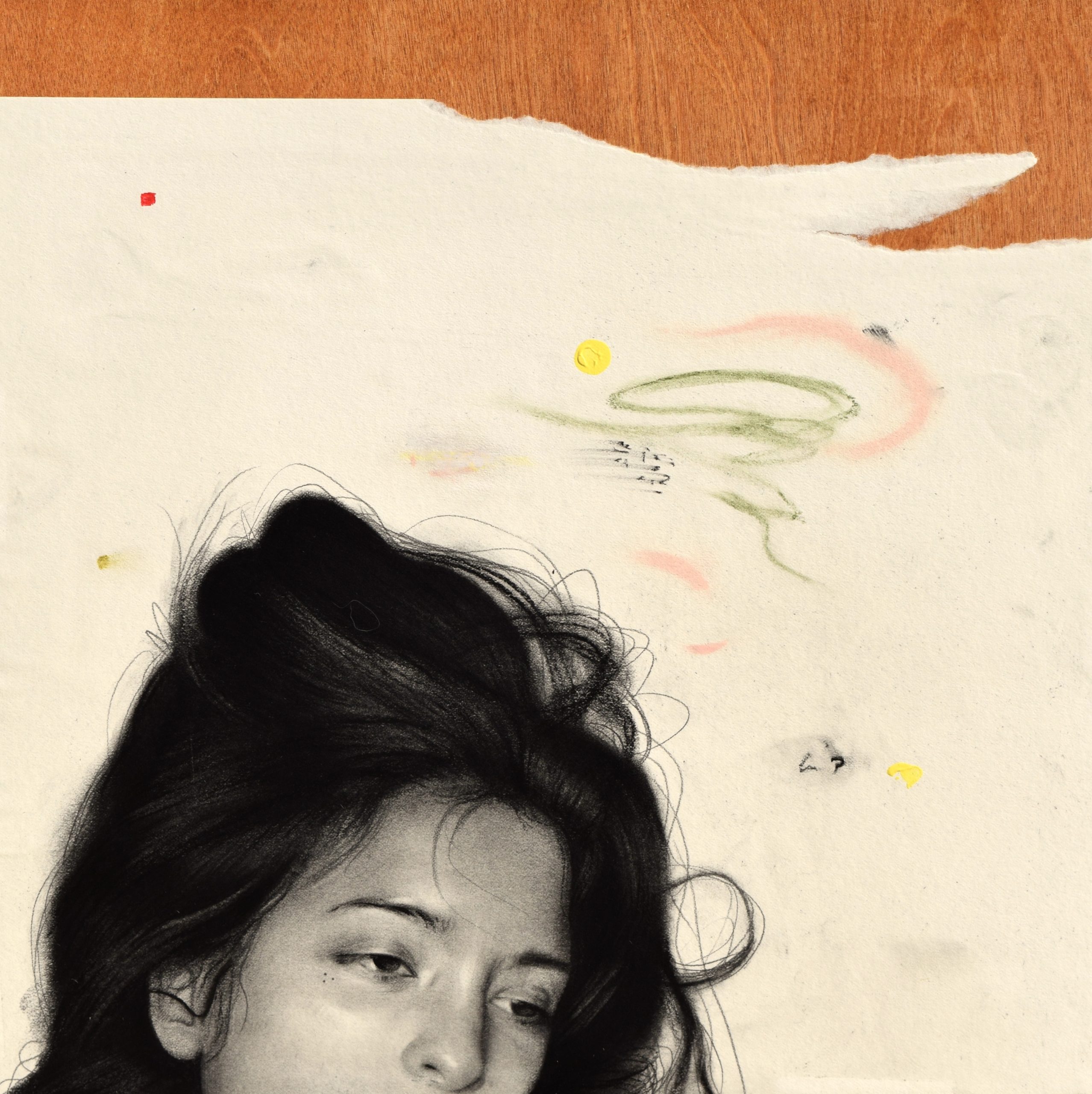Fine art mixed media drawings > A guest blog post by Daniel Segrove on Wabi-sabi, figurative art, and more.
Imperfect, Incomplete, and Impermanent
BY DANIEL SEGROVE
I am fascinated by the Japanese philosophy of Wabi-sabi; it is the view centered on the acceptance of transience and the imperfect. This idea—to understand and find beauty in the imperfect, incomplete, and impermanent—is what helped shaped the artistic voice I have today.
Acknowledging these three basic truths—nothing is perfect, nothing is ever finished, and nothing lasts forever—might sound heartbreaking to some, but it has given me so much creative freedom and enjoyment in my art. I have always been drawn to this kind of aesthetic, which embraces and elevates the beauty and truth in flaws. I try to recreate this philosophy in my own work by leaving my art with visible and often highlighted mistakes, damage, and an unfinished quality that works to enhance the overall impact and mood of my art on the viewer.

The fact that we are imperfect finite beings, and the ways these innate flaws make life so much more precious and enjoyable, is something I try to visually translate in my work. Creating portraits and using figurative narrative is the best way for me to explain how to not take our experiences, and those around us, for granted. Often leaving the figure unfinished, or the surface in areas damaged, is a way for me to explain that relationships, beauty and life all shall pass with time, and to cherish the moments we have.
What drives me in the studio is to explore new ways to translate this philosophy to a visual art form. To me, showing mistakes and keeping flaws is a way to create something honest, which most artists strive for. I often try not to fix flaws but instead adapt to them. If I make a mark or error, I in turn use it in a way to create eye flow in the composition, and as a way to make the emotional energy in the piece.

I have been criticized that my work looks unfinished and incomplete in a conventional sense. But to me, to add anything else would ruin the balance and beauty I discovered in the image. I use the word discover because in my work I often experiment and explore and rarely leave a piece with the idea I entered in with. If I feel that putting another mark will not help but instead hurt the piece, even if that means not fully rendering the subject, I will stop. I instead strive to focus on the mood and expression that is the fundamental quality in my work, instead of a complete classical approach to art.
I often use mistakes, tears, burns and other damage in my work to enhance the composition and contrast the more formal classical rendering of my figures; I believe this is what gives the unique characteristic of my work. I was taught at school that when you put a saturated color next to a muted color, a circle next to a square, three-dimensional next to flat, etc., they magnify each other’s qualities. Combining this theory with Wabi-sabi is what has helped form my artistic voice. I try to find ways of using conflicting forces of flaws and beauty to enhance and harmonize the overall energy, mood, and aesthetic.

Working on paper rather than painting in oils also adds to this idea of impermanence. With a painting on canvas or panel, you can rework a piece as much as you like, sanding and repainting to you see fit. Paper is a much more fragile surface to work with, it can only take so much of a beating before it starts to wither and break. It can also deteriorate more quickly if not handled with care, which I often like to relate to the care we need to take of ourselves and others.
With this in mind I purposely try to push the limitations of paper by burning, tearing, and smearing paint on the paper to enhance the fragile quality of the mood and in the actual material and thus creating a more profound and impactful artwork for the viewer to connect with.




Learn more about Daniel at: www.danielsegroveart.com






